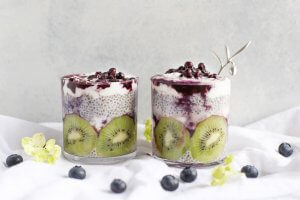What is the best substitute for Chia Seeds?
Do you need a substitute for chia seeds? If you’re looking for substitutes for chia seeds, your choice will depend on the specific role that they play in the recipe. Chia seeds are often used for their ability to absorb liquid and create a gel-like texture, as well as for their nutritional content. Try using: Flaxseeds, Sesame Seeds, Psyllium Husks, Gelatin or Agar-Agar, Oats, Quinoa, Cornstarch, Banana, Egg, or Yogurt.
What are Chia Seeds?
Chia seeds are tiny, oval-shaped seeds that come from the plant Salvia hispanica, which is actully a member of the mint family. These seeds have been consumed for centuries, particularly in Central and South America. They were a staple in the diets of ancient civilizations like the Aztecs and Maya. The word chia literally means “strength” in the Mayan language. Historically chia seeds were known as “runners’ food” because runners, and even warriors, would eat them to sustain their strength whilst running long distances or even when fighting the odd battle or two? Chia seeds are well-known for their nutritional value and health benefits.
Here are some key characteristics and benefits of chia seeds:
- Nutritional Profile: Chia seeds are rich in nutrients. They are a good source of fiber, healthy fats (omega-3 fatty acids), protein and vitamins (such as B vitamins). They are also high in minerals (such as calcium, phosphorus, and magnesium), and antioxidants.
- High Fiber Content: Chia seeds are particularly high in soluble fiber, which can help promote a feeling of fullness and aid in digestion. When exposed to liquid, chia seeds can absorb many times their weight in water, forming a gel-like consistency. Chia seeds are also suitable for use in recipes to create puddings, gels, or thickeners for smoothies.
- Omega-3 Fatty Acids: Chia seeds are one of the plant-based sources of omega-3 fatty acids. Omega-3 fatty acids are essential for heart and brain health. These healthy fats also have anti-inflammatory properties and can contribute to overall well-being.
- Antioxidants: Chia seeds contain antioxidants that help protect the body’s cells from damage caused by free radicals. Antioxidants play a role in reducing the risk of chronic diseases.
- Blood Sugar Regulation: Due to their fiber content, chia seeds can help stabilize blood sugar levels by slowing down the digestion and absorption of carbohydrates.
- Bone Health: Chia seeds are a good source of calcium, magnesium, and phosphoru. All of these are important for maintaining strong bones and preventing conditions like osteoporosis.
- Weight Management: The combination of fiber, protein, and healthy fats in chia seeds can contribute to a feeling of fullness and help with weight management.
- Versatile Use: There are many ways to incorporate Chia seeds into a variety of dishes. You can sprinkle over yogurt, oatmeal, or salads, mixe into smoothies, use as an egg substitute in recipes (when mixed with water), or even use to make chia pudding.
It’s worth noting that while chia seeds have numerous health benefits, they are also very calorie-dense, so moderation is key. Also, due to their high fiber content, it’s important to drink enough water when consuming chia seeds. This will help prevent potential digestive discomfort.
As with any dietary changes or additions, it’s a good idea to consult with a healthcare professional, especially if you have any existing health conditions or concerns.
Okay, before we look at your substitute options for chia seeds, let’s deal with that empty cupboard situation!
Where can I buy Chia Seeds
If you want to be more prepared and ensure you don’t run out of chia seeds then you should stock up now.
Nowadays most delicatessens and general supermarkets stock a wide variety of chia seeds. Or if you prefer you can also purchase chia seeds on-line.
So why not jump on and place your order today.
STOCK UP NOW!
Chia seeds – little powerhouses of fiber, fats, protein and vtamins.
Use in puddings, smoothies, or oatmeal. Also suitable for use in homebaking.
Certified USDA Organic. Vegan.
Keto friendly. Non-GMO.
What can I substitute for Chia Seeds?
Here are some of the best ingredients to substitute the flavor and role that chia seeds provides in your recipes.
- Flaxseeds
- Sesame Seeds
- Psyllium Husks
- Gelatin or Agar-Agar
- Oats
- Quinoa
- Cornstarch
- Banana
- Egg
- Yogurt
Chia Seeds substitutes
Flaxseeds
Use flaxseeds as a substitute for chia seeds in a variety of recipes. Use in recipes where chia seeds add nutritional value, texture, and binding properties. Both flaxseeds and chia seeds are high in fiber, healthy fats, and other nutrients. Here’s how you can use flaxseeds as a substitute for chia seeds:
1. Binding and Texture: Chia seeds are often used as a binding agent in recipes like baking and as an egg substitute. This is due to their ability to absorb liquid and create a gel-like texture. Flaxseeds can provide similar binding properties:
- Make Flaxseed Gel: Mix ground flaxseeds with water to create a flaxseed gel. Use a ratio of 1 tablespoon of ground flaxseeds to 3 tablespoons of water. Let the mixture sit for a few minutes until it thickens into a gel.
- Replace in Recipes: Use the flaxseed gel as a binding agent in recipes that call for chia seeds. Use it to help hold ingredients together in baked goods and other dishes.
- Flavor and Texture: Keep in mind that flaxseeds have a slightly nutty flavor that might impact the taste of your dish. The texture might also vary slightly from that of chia seeds.
2. Nutritional Boost: Both flaxseeds and chia seeds are known for their nutritional value. These include fiber, healthy fats, and protein. If you’re looking to enhance the nutritional content of your recipe:
- Replace Chia Seeds: Replace chia seeds with an equal amount of ground flaxseeds. Ground flaxseeds are more easily digestible and allow better absorption of nutrients.
- Texture and Flavor: Ground flaxseeds can add a pleasant nutty flavor and a slightly gritty texture to your recipes. Consider how this might complement the other ingredients.
- Adjust Liquid Content: Flaxseeds absorb liquid, so you might need to adjust the amount of liquid in your recipe.
3. Egg Substitute: Chia seeds are sometimes used as an egg substitute due to their gelling properties. You can also use flaxseeds in the same way.
- Make Flax Egg: Mix 1 tablespoon of ground flaxseeds with 3 tablespoons of water to create a flax egg. Let it sit for a few minutes until it thickens into a gel-like consistency.
- Replace in Recipes: Use the flax egg as a vegan substitute for eggs in recipes that call for chia eggs. This can work well in baking and cooking.
- Texture and Binding: Flax eggs can also help provide moisture and binding properties similar to chia eggs.
Remember that flaxseeds, especially ground flaxseeds, are sensitive to light, heat, and air, which can cause them to go rancid. It’s best to store them in the refrigerator or freezer and use them within a reasonable timeframe.
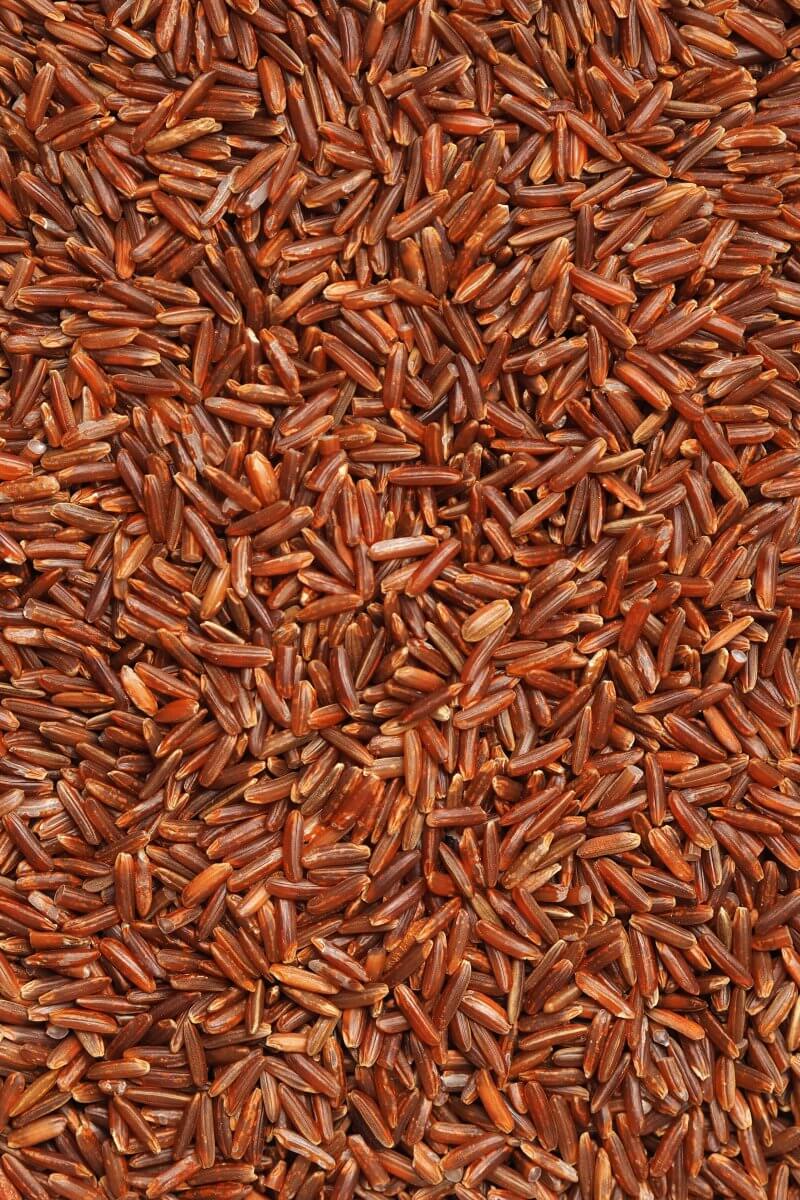
Sesame Seeds
Sesame seeds can be used as a substitute for chia seeds particularly in dishes where you’re looking for a similar crunch, texture, or nutritional profile. However, keep in mind that sesame seeds don’t have the same ability to create a gel-like texture. They also are not suitable for thickening liquids like chia seeds do. Here’s how you can use sesame seeds as a substitute for chia seeds:
1. Nutritional Boost: Chia seeds are known for their nutritional value, including fiber, healthy fats, and protein. Sesame seeds also offer nutritional benefits, including healthy fats, protein, and minerals. If you’re looking to add a nutritional boost to your recipe:
- Replace Chia Seeds: Replace chia seeds with an equal amount of sesame seeds. Be aware that sesame seeds have a slightly nutty flavor that might impact the overall taste of your dish.
- Texture and Flavor: Sesame seeds can add a pleasant crunch and a nutty taste to your recipes. Consider whether the flavor and texture of sesame seeds complement the other ingredients.
2. Crunch and Texture: Chia seeds can add a unique crunch to recipes like smoothies, yogurt, and salads. Sesame seeds can offer a similar crunch and texture:
- Sprinkle Over Dishes: Sprinkle sesame seeds over dishes like yogurt, oatmeal, cereal, or salads to add a crunchy element.
- Mix into Baking: Incorporate sesame seeds into baked goods, such as bread, muffins, and cookies, to add texture and flavor.
- Consider Toasting: Toasted sesame seeds can enhance their flavor and aroma. You can lightly toast them in a dry skillet over medium heat before using them in your recipe.
3. Flavor Variations: Chia seeds and sesame seeds have different flavors, so using sesame seeds as a substitute might result in a different taste. Consider this when choosing sesame seeds as an alternative:
- Consider the Dish: Think about whether the nutty flavor of sesame seeds will work in your recipe. In some cases, the substitution might lead to a delightful flavor variation.
- Experiment and Adjust: Since the flavor and texture of sesame seeds differ from chia seeds, it might be necessary to experiment and adjust quantities to achieve the desired outcome.
While sesame seeds can provide a similar crunch and nutritional boost, they don’t have the same ability to create a gel-like texture or thicken liquids like chia seeds. The substitution will depend on the specific dish you’re preparing and the characteristics you’re aiming for in the final result.
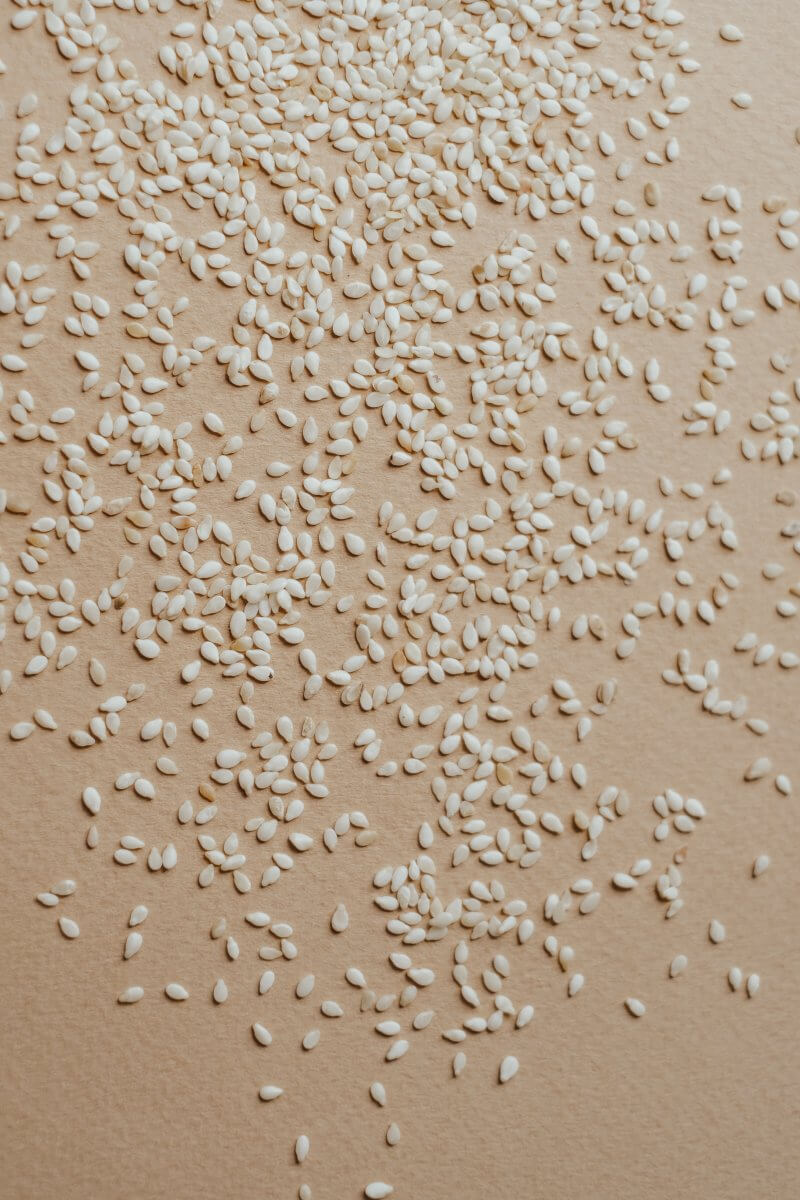
Psyllium Husks
Psyllium husks can be used as a substitute for chia seeds in recipes where chia seeds are used as a binding agent, thickening agent, or to provide a gel-like texture. They have a high content of soluble fiber, which gives them their ability to absorb water and create a gel-like consistency. Here’s how you can use psyllium husks as a substitute for chia seeds:
1. Binding and Texture: Psyllium husks can offer similar binding properties, similar to chia seeds, due to their gel-forming ability:
- Mix with Water: Combine psyllium husk powder (usually 1 teaspoon) with water (usually 1/4 cup) to create a thick gel-like mixture. Allow it to sit for a few minutes until it thickens.
- Add to Recipes: Use the psyllium gel as a binding agent in your recipes, similar to how you would use soaked chia seeds. It can help hold ingredients together and provide structure.
- Adjust Quantities: The amount of psyllium husks needed may vary depending on the recipe. Start with a small amount and gradually add more if needed.
- Texture Consideration: Keep in mind that psyllium husks can create a slightly different texture compared to chia seeds, so the final result might differ.
2. Thickening Agent: Chia seeds are also known for their ability to thicken liquids and create a gel-like consistency. Psyllium husks can provide a similar thickening effect in recipes:
- Mix with Liquid: Stir psyllium husk powder into a liquid, such as water or milk, to create a thick mixture. Allow it to sit for a few minutes to thicken.
- Add to Recipes: Incorporate the thickened psyllium mixture into your recipes where you want to achieve thickness or a gel-like texture. This can work well in smoothies, puddings, and some baked goods.
- Adjust Amounts: The amount of psyllium husks needed to achieve the desired thickness can vary based on the recipe. Experiment to find the right quantity.
- Flavor and Texture: Keep in mind that psyllium husks might impact the flavor and texture of your recipe, so consider whether it fits well with the overall taste.
It’s important to note that psyllium husks absorb a significant amount of liquid, so they should be used carefully to avoid overly thick or gummy results. Additionally, some people might be sensitive to psyllium, so it’s a good idea to introduce it gradually into your diet.
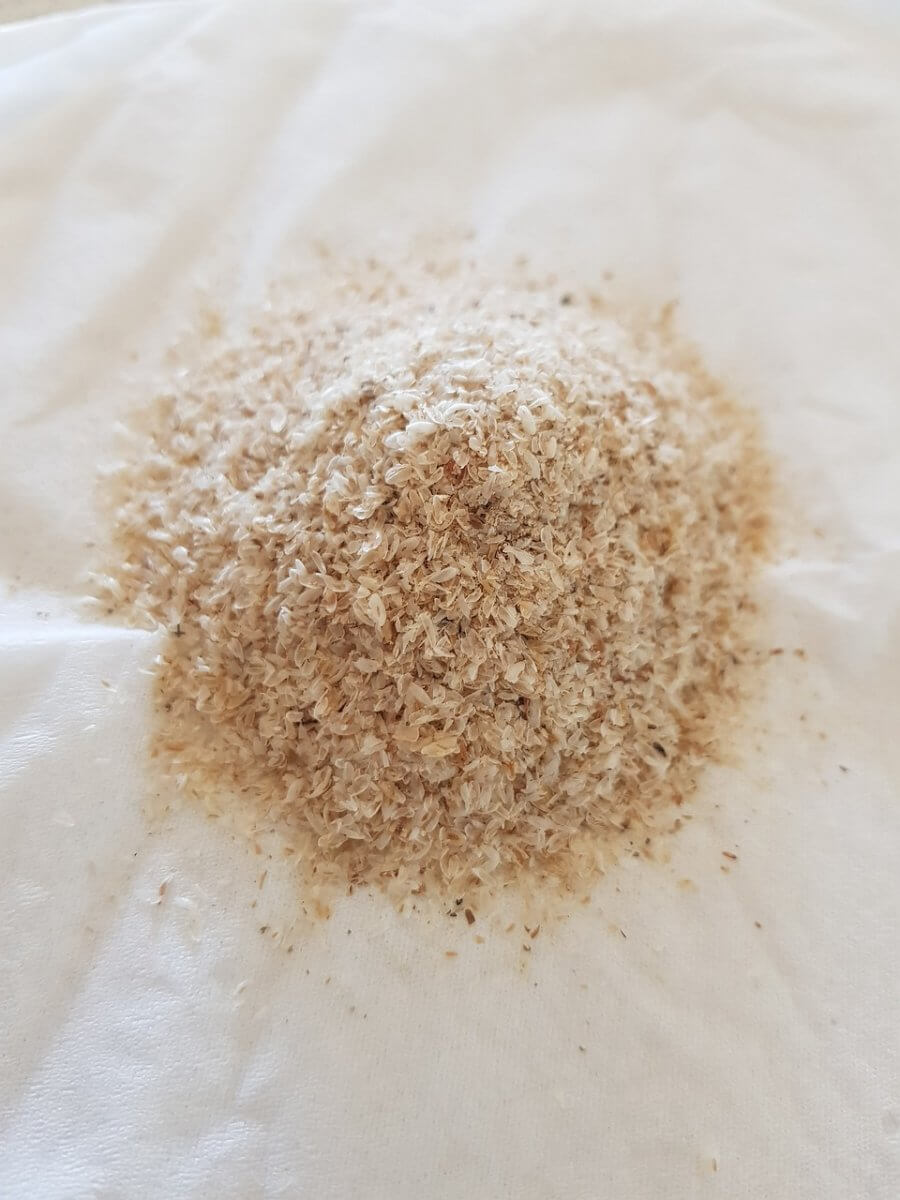
Gelatin or Agar-Agar
You can use gelatin and agar-agar as substitutes for chia seeds when you’re looking to achieve a gel-like texture or binding properties in recipes. Here’s how you can use gelatin or agar-agar as a substitute for chia seeds:
1. Gelatin: Gelatin is an animal-derived protein that can create a gel-like texture when dissolved in liquid and then cooled. It’s commonly used in recipes like puddings, jellies, and mousses. Here’s how to use gelatin as a substitute for chia seeds:
- Dissolve Gelatin: Follow the instructions on the gelatin package to dissolve it in warm liquid. Typically, you’ll need to sprinkle gelatin over a small amount of cold liquid to “bloom” it, and then stir in hot liquid until the gelatin is fully dissolved.
- Mix with Other Ingredients: Mix the dissolved gelatin with the other ingredients in your recipe. Make sure to evenly distribute the gelatin mixture.
- Chill and Set: Refrigerate the mixture until it sets and achieves the desired texture. The gelatin will create a firm, jiggly consistency as it cools.
- Adjust Quantities: The amount of gelatin needed will depend on the specific recipe and the desired thickness. Gelatin’s setting power can vary, so you might need to experiment to get the right consistency.
2. Agar-Agar: Agar-agar is a plant-based substitute for gelatin, derived from seaweed. It’s often used in vegan and vegetarian recipes to achieve similar gelling properties. Here’s how to use agar-agar as a substitute for chia seeds:
- Dissolve Agar-Agar: Agar-agar comes in the form of flakes, powder, or bars. Dissolve it in hot liquid, usually by bringing the liquid to a boil and then simmering it with the agar-agar until it’s fully dissolved.
- Cook with Other Ingredients: Mix the dissolved agar-agar with the other ingredients in your recipe while the mixture is still warm and fluid.
- Chill and Set: Allow the mixture to cool and set in the refrigerator. Agar-agar will create a firm texture as it cools.
- Adjust Quantities: Agar-agar’s gelling power can vary, so you might need to adjust the quantity based on the recipe’s requirements and the desired consistency.
Both gelatin and agar-agar can create a gel-like texture, but they have different origins and properties. As gelatin is not suitable for vegetarians or vegans, you might find a better altrnative is agar-agar. Agar-agar is plant-based and appropriate for these dietary preferences. When using either gelatin or agar-agar as a substitute for chia seeds, consider the specific requirements of your recipe and any dietary restrictions.
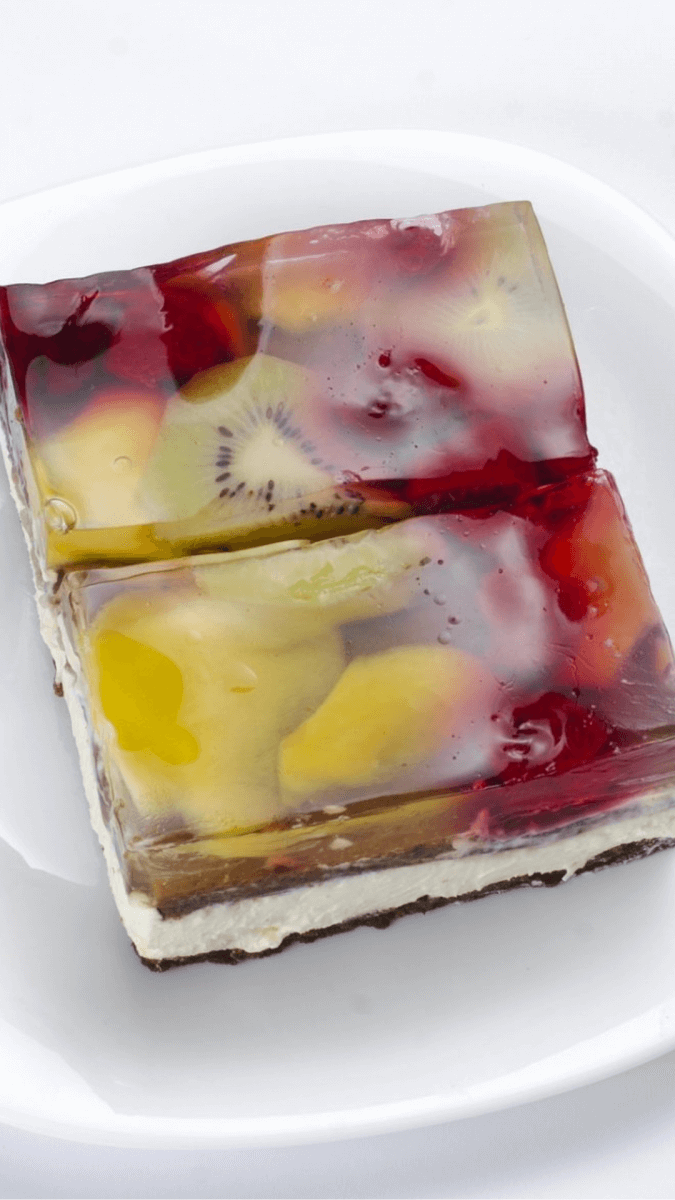
Oats
Use oats as a substitute in dishes where chia seeds are used for their texture, binding properties, or nutritional value. Here’s how you can use oats as a substitute for chia seeds:
1. Binding and Texture: Chia seeds are often used as a binding agent to help hold ingredients together and provide a gel-like texture. Oats can offer a similar texture and binding ability in certain dishes:
- Oat Flour or Ground Oats: Replace chia seeds with an equal amount of oat flour or finely ground oats in recipes like muffins, pancakes, and cookies. This can help provide structure and binding properties.
- Rolled Oats: Rolled oats can also be used to create a texture similar to chia seeds in recipes like oatmeal, yogurt parfaits, and smoothies. Add rolled oats and let them soak in liquids to achieve a softened, thickened consistency.
- Adjust Liquid Content: Since oats absorb liquid as they soak, you might need to adjust the amount of liquid in your recipe. Use slightly less liquid and gradually add more if needed.
- Flavor Consideration: Keep in mind that oats have a mild, slightly nutty flavor that might impact the overall taste of your dish.
2. Nutritional Value: Oats offer nutritional benefits, similar to chia seeds, and can be used to add fiber and nutrients to your recipes:
- Use Oats as a Base: Replace chia seeds with oats as a base for recipes like puddings, parfaits, and smoothies. Oats can provide a hearty and filling foundation for these dishes.
- Add Fiber and Nutrients: Oats are a good source of dietary fiber, which can contribute to a feeling of fullness and aid digestion. They also provide essential vitamins and minerals.
- Texture Adaptation: Keep in mind that the texture of oats is different from that of chia seeds, so the final result may vary. Experiment with quantities and preparation methods to achieve the desired texture.
Remember that substitutions might require adjustments to other ingredients and methods. The specific way you use oats as a substitute for chia seeds will depend on the recipe you’re working on and the characteristics you’re trying to replicate.
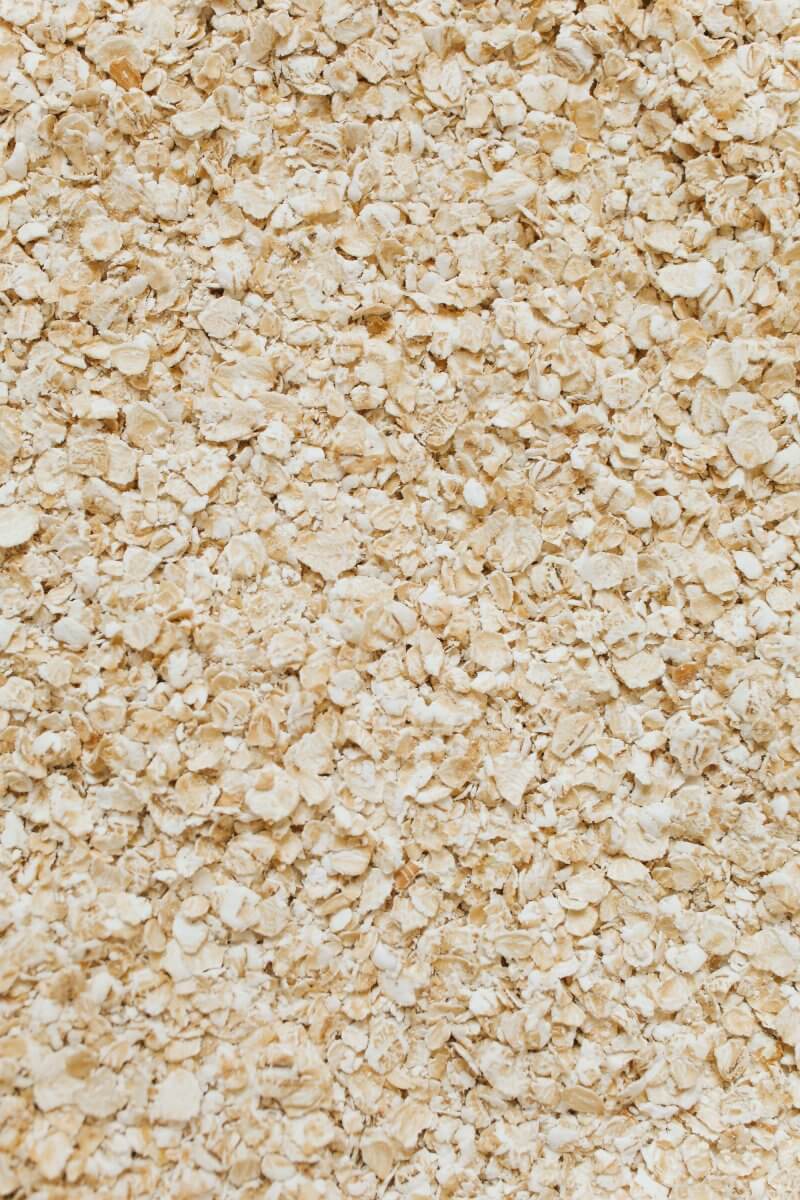
Quinoa
Use quinoa as a substitute for chia seeds. Use in recipes where chia seeds are used for their nutritional value, texture, and thickness. However, it’s important to note that quinoa has a different texture and flavor, so the substitution might not be a one-to-one replacement in all cases. Here’s how you can use quinoa as a substitute for chia seeds:
1. Nutritional Boost: Chia seeds are rich in fiber, healthy fats, and protein. Quinoa is also a good source of protein and contains fiber, making it a nutritional alternative. If you’re looking to add a nutritional boost to your recipes, you can consider using quinoa:
- Cooked Quinoa Addition: Cook quinoa according to the package instructions and then add it to your recipe. It can work well in salads, oatmeal, yogurt, or baked goods.
- Adjust Quantities: Keep in mind that quinoa has a different texture than chia seeds, so you might need to adjust the quantity based on your preference and the desired outcome.
- Flavor Consideration: Quinoa has a slightly nutty flavor that might impact the overall taste of your dish. Consider whether the flavor of quinoa complements the other ingredients in the recipe.
2. Thickening Agent: Chia seeds are often used to create a gel-like texture in recipes like puddings and smoothies. While quinoa doesn’t gel in the same way, it can still provide thickness and body to certain dishes:
- Blend with Liquid: Cook quinoa until it’s soft and then blend it with a small amount of liquid to create a smooth paste.
- Add to Recipes: Incorporate the blended quinoa into your recipes where you want thickness. This can work well in smoothies, soups, or even as a base for sauces.
- Texture and Flavor: Keep in mind that blended quinoa will have a different texture and flavor compared to chia seeds. This would best suit recipes where a slightly grainy texture is acceptable.
It’s important to experiment with the substitution and adjust quantities and methods based on the specific recipe you’re working on. While quinoa offers its own set of nutritional benefits, the texture and flavor differences might require some creativity to achieve the desired outcome.
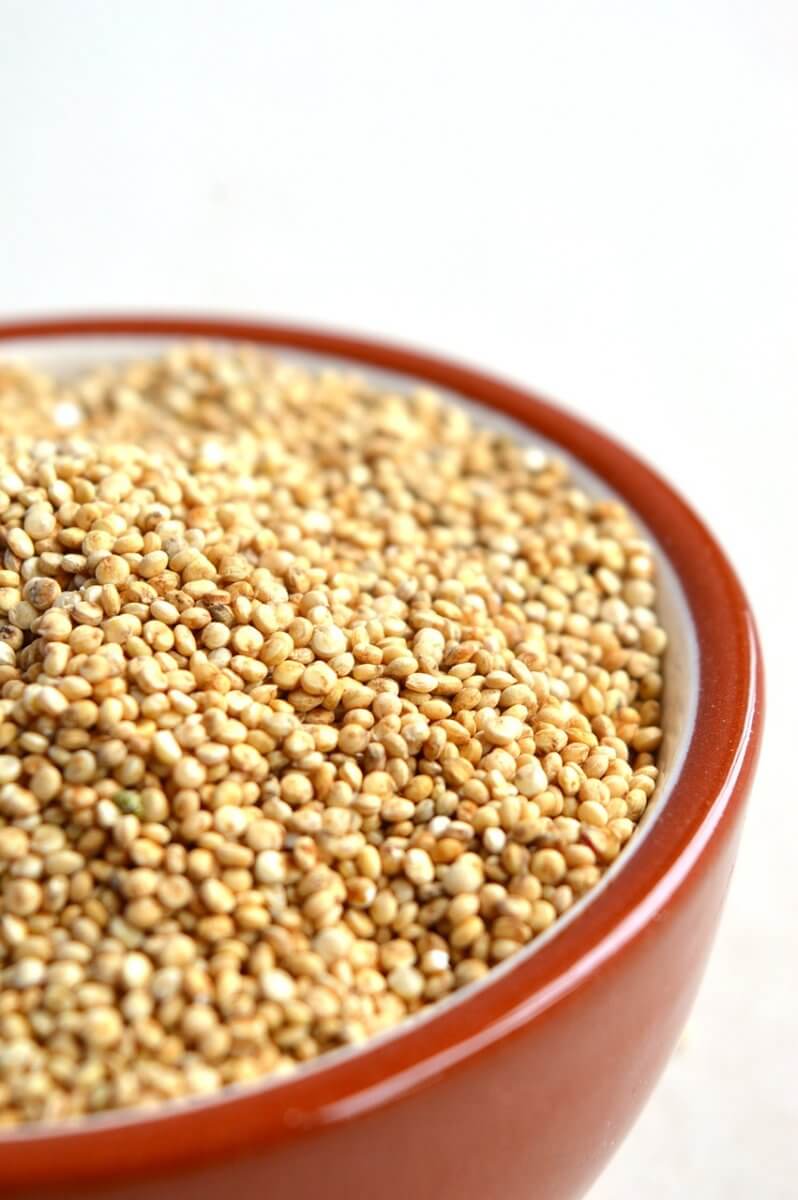
Cornstarch
Use cornstarch as a substitute for chia seeds. It is a common thickener in cooking and baking and can be a suitable replacement in certain dishes. Here’s how you can use cornstarch as a substitute for chia seeds:
1. Thickening Agent: Chia seeds are often used to thicken liquids in recipes like sauces, gravies, and soups. Cornstarch can be used in a similar way to achieve a thicker consistency. Here’s how you can use cornstarch as a thickening agent:
- Create a Slurry: Mix cornstarch with a small amount of cold liquid (such as water or broth) to create a smooth paste called a slurry. This helps prevent lumps from forming when you add it to the hot liquid.
- Add to Hot Liquid: Gradually pour the cornstarch slurry into the hot liquid you’re trying to thicken. Remember to stir constantly to prevent lumps from forming.
- Cook and Stir: Continue to cook the mixture while stirring until it reaches the desired thickness. The heat will activate the thickening properties of the cornstarch.
- Adjust Amount: The amount of cornstarch you need will depend on the quantity of liquid you’re thickening. As a general guideline, 1 tablespoon of cornstarch mixed with 1 tablespoon of cold liquid can thicken about 1 cup of liquid.
2. Creating a Gel-Like Texture: Chia seeds are known for their ability to absorb liquid and create a gel-like texture, which can also be useful in recipes like puddings and smoothies. While cornstarch doesn’t create the same gel-like consistency, it can still help thicken and give a smoother texture to such dishes. Here’s how you can use cornstarch to achieve a similar effect:
- Mix with Cold Liquid: Mix cornstarch with a small amount of cold liquid to create a slurry, just as you would for thickening.
- Add to Recipe: Add the cornstarch slurry to your recipe, such as a pudding or smoothie, while it’s being cooked or blended.
- Cook and Blend: Cook or blend the mixture to activate the thickening properties of the cornstarch and achieve a smoother texture.
Remember that cornstarch has a neutral flavor, so it won’t add any taste to your recipe. However, it might not provide the exact same texture as chia seeds, so the final result might differ slightly. Adjust the amount of cornstarch based on the consistency you’re aiming for, and keep in mind that experimentation might be necessary to get the best results in your specific dish.
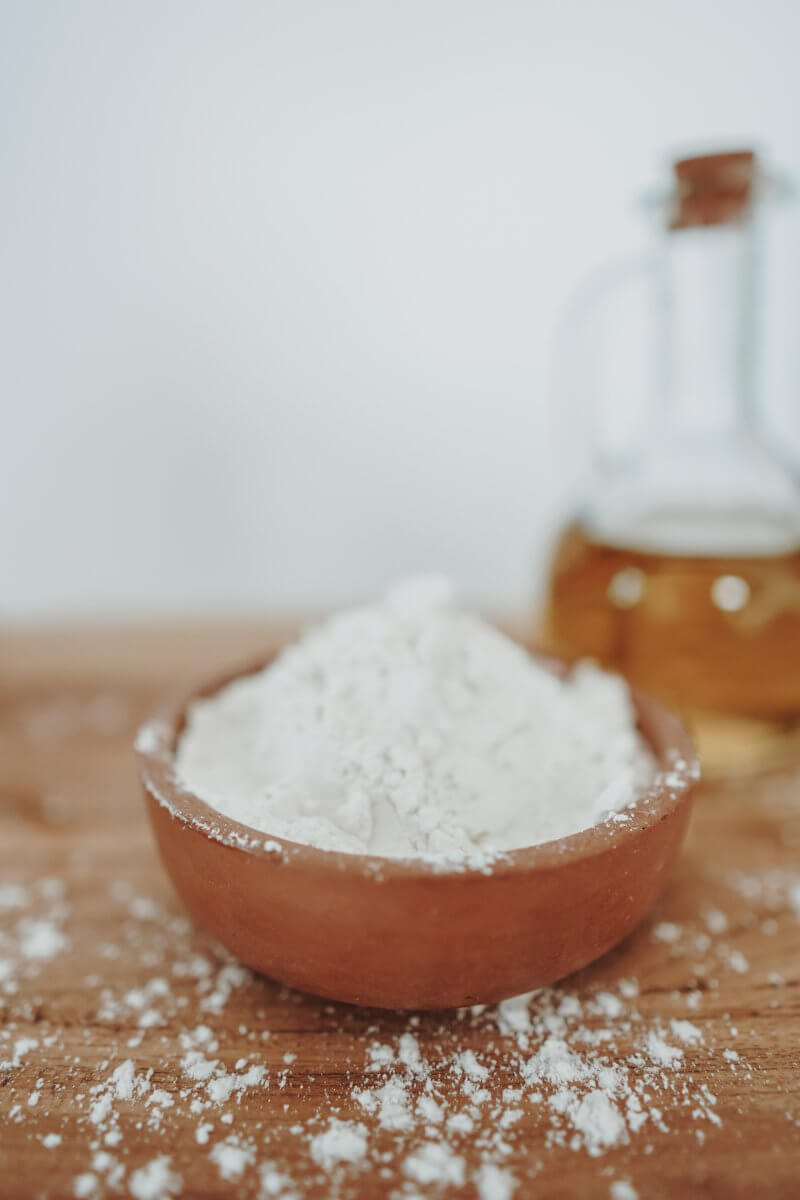
Banana
Use banana as a substitute for chia seed. Especially in recipes where chia seeds are used for their binding, moisture-retaining, and nutritional properties. Here’s how you can use banana as a substitute for chia seeds:
1. Binding Agent: Mashed bananas can provide similar binding properties to chia seeds in certain dishes. Here’s how you can use banana as a binding agent:
- Mashed Banana Replacement: Replace chia seeds with an equal amount of mashed banana. Typically, 1 tablespoon of chia seeds can be replaced with about 1/4 to 1/3 cup of mashed banana.
- Adjust Other Ingredients: Since bananas are moist, you might need to adjust the liquid content and other ingredients in your recipe. Start by reducing the amount of liquid and other wet ingredients to compensate for the moisture from the banana.
- Flavor Impact: Keep in mind that mashed banana will also add a sweet flavor and a distinct banana taste to your recipe. This can work well in recipes like muffins, pancakes, or certain baked goods.
2. Moisture Retention: Use mashed bananas to provide moisture and contribute to the texture of the final dish. Here’s how you can use banana for moisture retention:
- Mashed Banana Addition: Add mashed banana to your recipe to increase moisture and create a soft texture. You might need to adjust the quantity based on the desired moisture level.
- Adjust Consistency: Depending on the moisture content of the banana, you might need to adjust other ingredients in your recipe to achieve the desired consistency.
- Flavor Consideration: The flavor of banana will be a prominent part of the final dish, so make sure it complements the other flavors in the recipe.
It’s important to note that while banana can provide similar binding and moisture-retaining properties as chia seeds, the flavor and texture will be different. Experimentation might be necessary to find the right balance and achieve the desired result in your specific recipe.
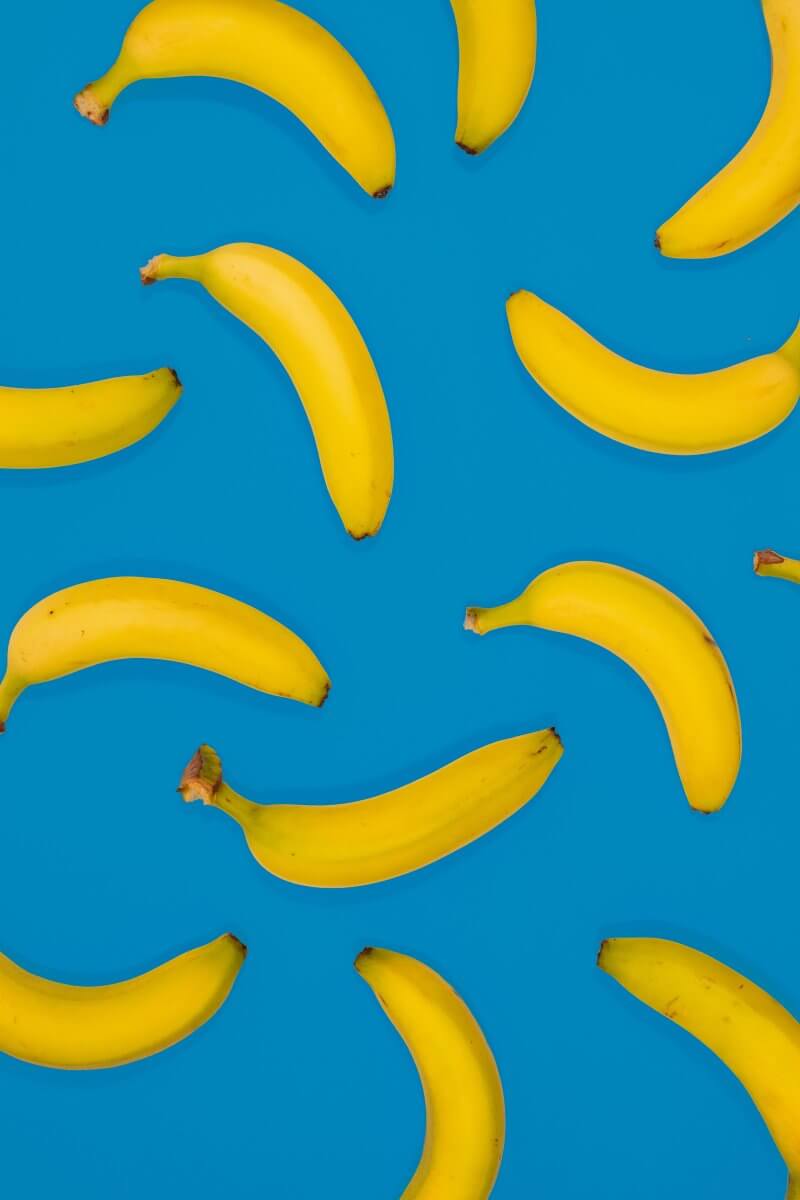
Egg
Use eggs as a substitute for chia seeds. Especially in recipes where chia seeds act as a binding or thickening agent. Chia seeds are often used as an egg substitute in vegan recipes or also for people who have egg allergies. Here’s how you can use eggs as a substitute for chia seeds:
1. Whole Egg Substitute: One whole egg can generally be replaced by one of the following options:
- 1/4 cup of unsweetened applesauce or mashed banana: This can provide moisture and binding properties similar to an egg.
- 1/4 cup of plain yogurt or buttermilk: These can add moisture and help with binding.
- 1/4 cup of silken tofu: Blended silken tofu can provide a creamy texture and binding properties.
- 2 tablespoons of potato starch or cornstarch mixed with 2 tablespoons of water: This mixture can help bind ingredients and provide some structure.
2. Egg White Substitute: If you’re specifically looking to replace egg whites (for instance, in recipes that require only egg whites for binding), you can use the following:
- Aquafaba: This is the liquid from a can of chickpeas. Create a foam similar to egg whites by whipping the liquid. You can also use this liquid in vegan baking.
- Whipped Cream of Tartar: Whipping cream of tartar with water can create a foam that can replace egg whites in some recipes.
3. Egg Yolk Substitute: Egg yolks contribute richness and moisture to recipes. If you need to replace egg yolks:
- Mashed avocado: Avocado can provide a creamy texture and healthy fats similar to egg yolks.
- Extra oil or butter: Adding a bit of oil or melted butter can replicate the richness of egg yolks.
Remember that the specific substitute you choose will depend on the recipe you’re working with and the properties you want to achieve.
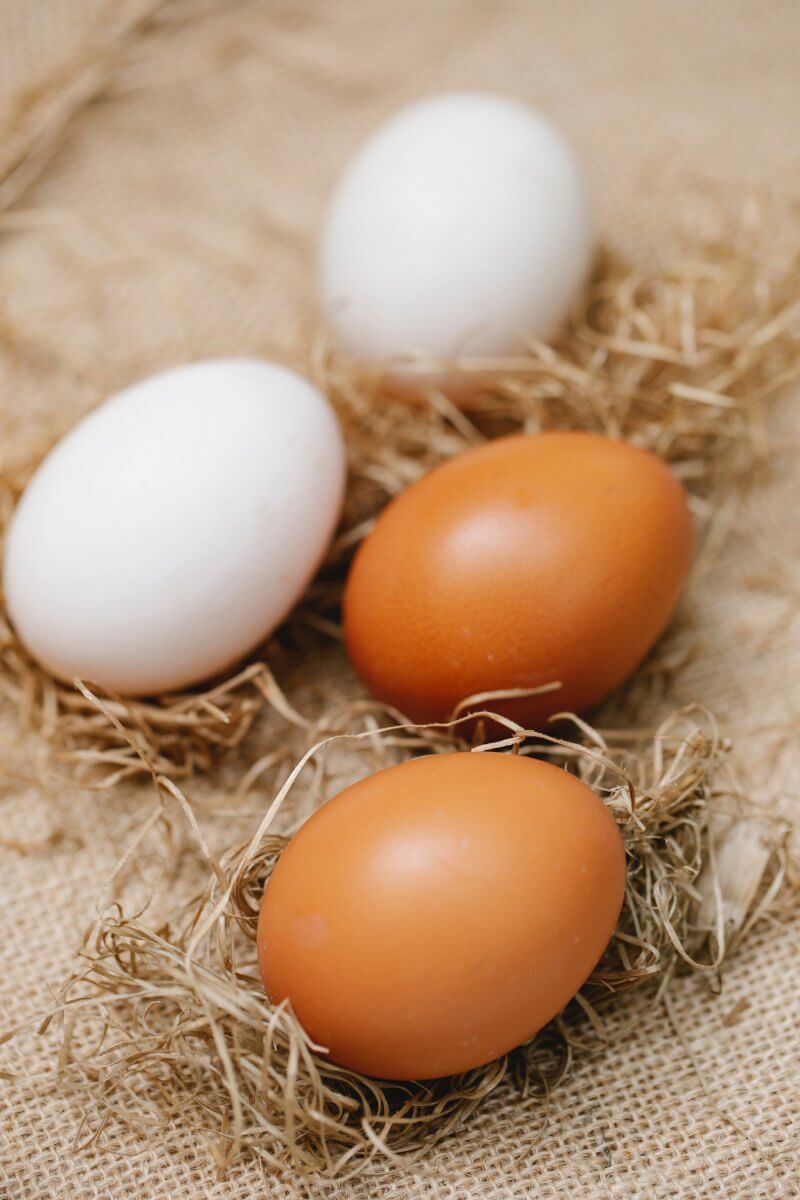
Yogurt
Use yogurt as a substitute in for chia seeds, especially in recipes where chia seeds are needed for their thickening and binding properties. Keep in mind that while yogurt can provide moisture and texture, it might not have the same gelling ability as chia seeds. Here’s how you can use yogurt as a substitute for chia seeds:
1. Yogurt as a Binding Agent: Replace the chia seeds with yogurt, which can also act as a binding agent in recipes liked baked goods, pancakes, or waffles. Here’s how:
- Replace Chia Seeds with Yogurt: For every tablespoon of chia seeds, you can use about 2 to 3 tablespoons of plain yogurt. The exact amount may vary depending on the recipe and the consistency you’re trying to achieve.
- Adjust Liquid Content: Since yogurt has moisture, you might need to adjust the liquid content of your recipe slightly. Start by reducing the amount of liquid (such as milk or water) by a small amount and then gradually add more if needed.
- Texture and Flavor Considerations: Keep in mind that yogurt will add a tangy flavor and creamy texture to your recipe. This might work well in certain dishes, like muffins or pancakes, where a slightly tangy flavor is acceptable.
2. Yogurt as a Thickening Agent: If you’re using chia seeds to thicken a recipe, such as a smoothie or a pudding, yogurt can also work as a substitute:
- Use Yogurt for Creaminess: Replace chia seeds with an equal amount of yogurt to add creaminess and thickness to your recipe.
- Adjust Consistency: Depending on the thickness of the yogurt you’re using, you might need to adjust the quantity slightly to achieve the desired consistency. You can always add more yogurt if the mixture isn’t thick enough.
- Flavor and Texture: Yogurt will contribute its characteristic flavor and texture, so make sure it complements the other flavors in your recipe.
Remember that substitutions might require a bit of experimentation, as the properties of yogurt are different from those of chia seeds. Additionally, yogurt will also contribute its own nutritional benefits, including protein and probiotics, to your recipe.
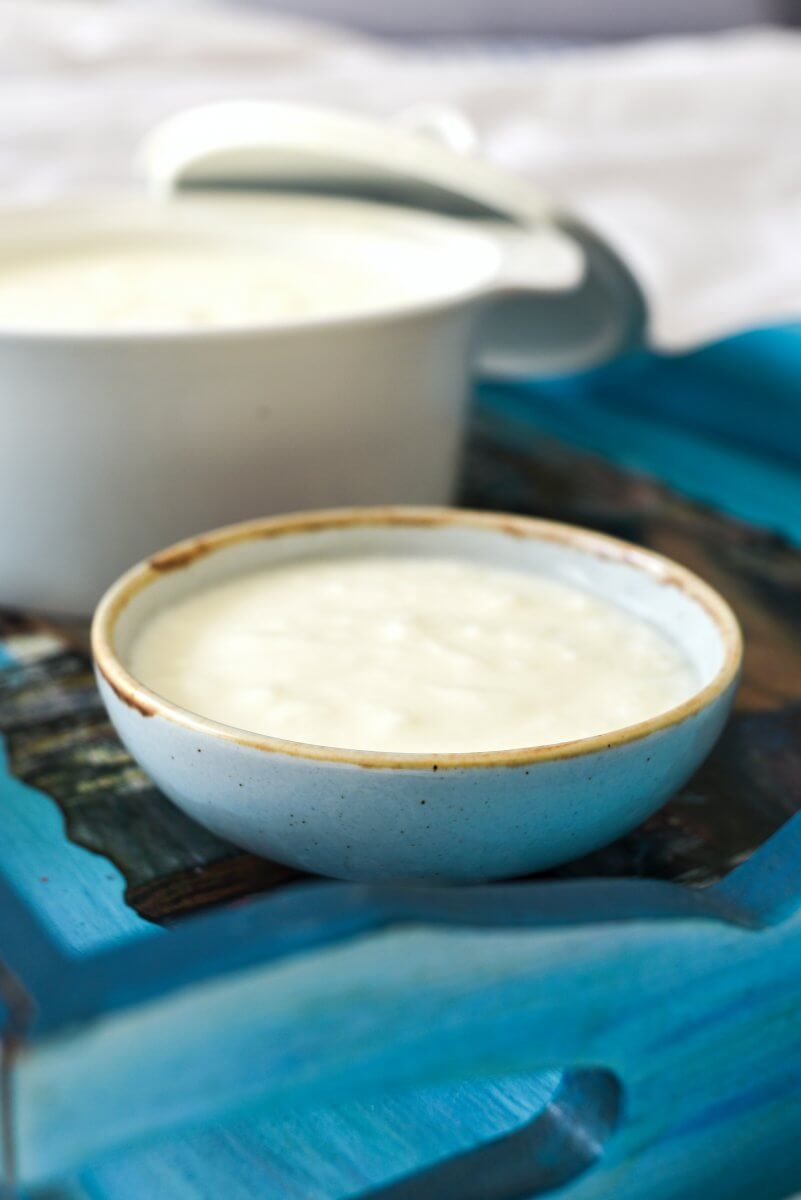
Summary for Chia Seeds substitutes
Okay – that’s you all sorted with suitable substitutes for chia seeds.
In conclusion, there are several options for substituting chia seeds in recipes, each with its own unique properties and benefits. The choice of substitute depends on the role chia seeds play in the recipe and the characteristics you’re looking to replicate. Here’s a summary of the key substitutes and their uses:
- Flaxseeds: Use ground flaxseeds as a binding agent, nutritional boost, or egg substitute in recipes. They provide a nutty flavor and are high in fiber, healthy fats, and nutrients.
- Psyllium Husks: Use Psyllium husks for binding, thickening, and creating a gel-like texture. They absorb water to form a gel and are particularly useful in gluten-free baking.
- Oats: Rolled oats, oat flour, or ground oats can offer a similar texture and nutritional value to chia seeds. They can work as a binding agent or add thickness to dishes.
- Sesame Seeds: Use sesame seeds for a nutritional boost and to add crunch to recipes. However, they won’t provide the same gelling or binding properties as chia seeds.
- Gelatin or Agar-Agar: Use gelatin or agar-agar to create a gel-like texture which can thicken liquids in recipes. Gelatin is animal-derived, while agar-agar is plant-based and suitable for vegans.
- Banana or Applesauce: These can provide moisture, binding, and some nutritional benefits in recipes. They work well in baked goods and as egg substitutes.
- Yogurt: Use yogurt as a binding agent, moisture retainer, or creamy element in recipes. It can be a good choice for smoothies, baked goods, and desserts.
- Quinoa: Quinoa can be used for nutritional value, providing protein and fiber. It can be added to dishes like salads, baked goods, and breakfast bowls.
Remember that when substituting ingredients, it’s important to consider the flavor, texture, and overall characteristics of the substitute in relation to the original ingredient. Consulting recipe resources and adapting recipes to your preferences will help you find the best substitutes for chia seeds in various dishes.
We have gathered together a lot more facts on ingredients such as herbs, spices, oils, nuts, etc. if you would like to learn some more.
